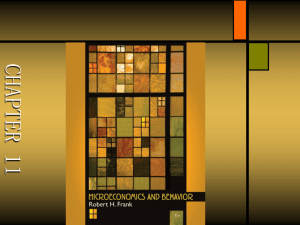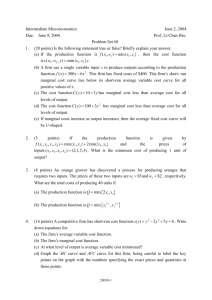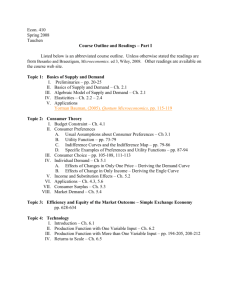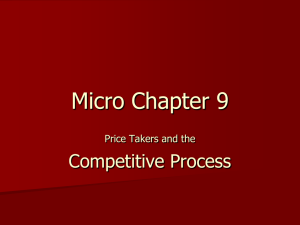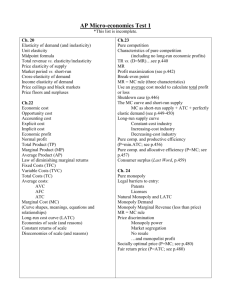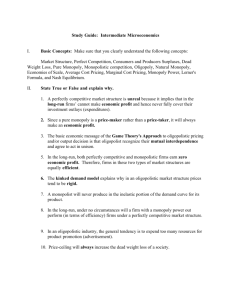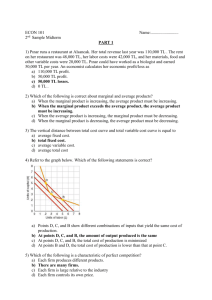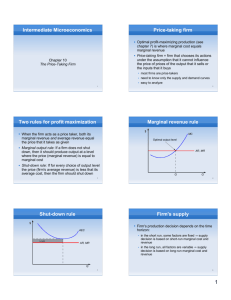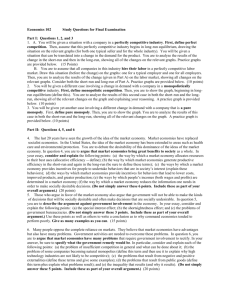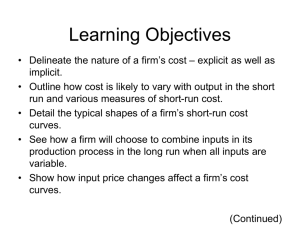Eco 640: Study Guide
advertisement
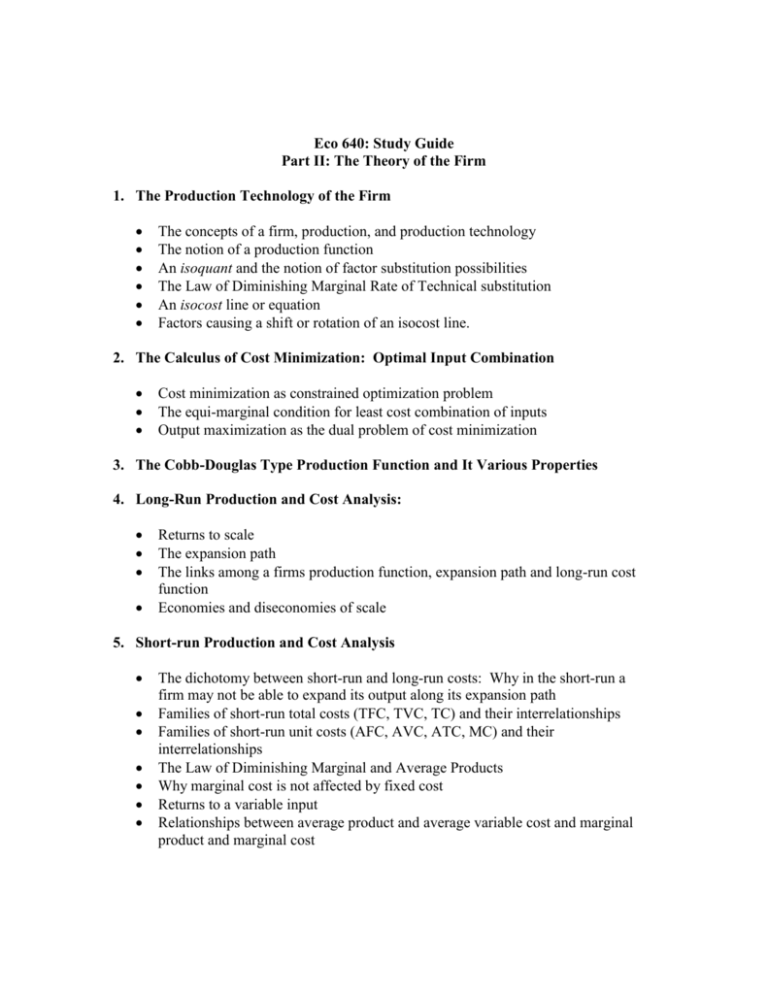
Eco 640: Study Guide Part II: The Theory of the Firm 1. The Production Technology of the Firm The concepts of a firm, production, and production technology The notion of a production function An isoquant and the notion of factor substitution possibilities The Law of Diminishing Marginal Rate of Technical substitution An isocost line or equation Factors causing a shift or rotation of an isocost line. 2. The Calculus of Cost Minimization: Optimal Input Combination Cost minimization as constrained optimization problem The equi-marginal condition for least cost combination of inputs Output maximization as the dual problem of cost minimization 3. The Cobb-Douglas Type Production Function and It Various Properties 4. Long-Run Production and Cost Analysis: Returns to scale The expansion path The links among a firms production function, expansion path and long-run cost function Economies and diseconomies of scale 5. Short-run Production and Cost Analysis The dichotomy between short-run and long-run costs: Why in the short-run a firm may not be able to expand its output along its expansion path Families of short-run total costs (TFC, TVC, TC) and their interrelationships Families of short-run unit costs (AFC, AVC, ATC, MC) and their interrelationships The Law of Diminishing Marginal and Average Products Why marginal cost is not affected by fixed cost Returns to a variable input Relationships between average product and average variable cost and marginal product and marginal cost 6. Profit Maximization and the Supply Curve of a Competitive Firm: Short-run The equi-marginal condition for profit maximizing output in the short-run The equivalence of profit maximization and loss minimization A firm’s decision to continue operating or shut-down in the short-run Identifying the short-run supply curve as a segment of the short-run marginal cost curve of a competitive firm Factors affecting the supply curve of a competitive firm The market supply curve of a competitive industry, short-run. 7. The Theory of Marginal Productivity and The Demand for Factors of Production The notion of marginal revenue product The marginal revenue product as the demand for labor of a competitive firm Factors affecting the demand for labor The demand for factor inputs in general 8. Make sure you know the difference among the following cost concepts: Explicit costs, implicit costs, and opportunity costs
